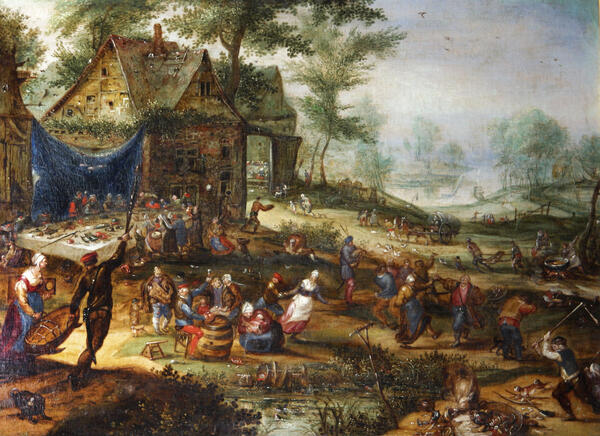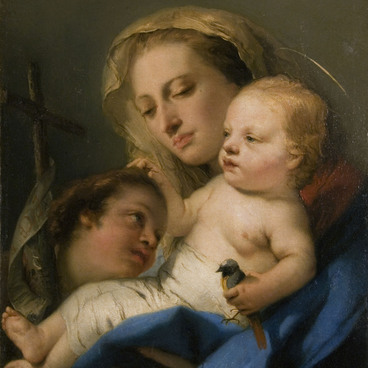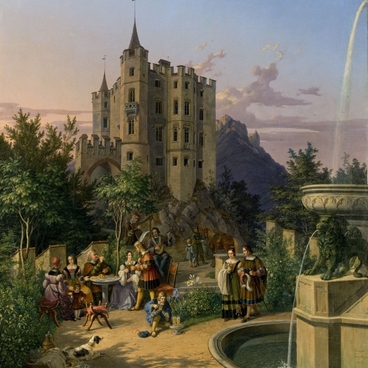The painting “Rural Holiday” of the XVII century entered the museum in 1938. The painting is part of the “valuable collection of seized property” of Nikita Andreevich Melikov, the former political prisoner.
A small, landscape format picture is painted in oil on canvas. The author of the work remained unknown, but obviously he is one of “the Little Dutch masters”. This term is used mainly in Russian art criticism, and is semantically based on the small size of pictures painted by artists. In Russia, the fashion for “the Little Dutch masters” was introduced by Peter I. The collection of Dutch paintings began with pictures acquired by the sovereign.
The small Dutch pictures looked particularly contrasting in comparison with the large canvases painted during the Renaissance for palaces, palazzi and cathedrals. This conventional name unites the artists of the “golden age of Holland”, that is, the seventeenth century. In just 20 years, since 1640, about 1.3 million pictures were painted and sold in Holland. Often the plots were the same, up to the complete copying of the original picture. Their works do not represent a particular area of focus or school, but have a number of common features: a clear design, high degree of detail and precise technique. The “Dutch” worked in various genres — still life, landscape, small battle scenes. These paintings are used to study the life of that bygone era: what people ate, how they dressed, how they had fun. Of course, they are considered unsurpassed masters of the genre art.
The picture “Rural Holiday” belongs to this genre. A small canvas depicts a lot of people having fun, perhaps during a kermesse. In Europe, kermesse was called holidays and festivals in honor of the end of the harvest. Many art expets suggest that the “Dutch” exaggerated the scenes they depict. The life of well-to-do burghers (for their small houses such pictures were most often painted) was ennobled, and the life of commoners, on the contrary, was depicted as more ignoble. At first glance, this is how we can judge this picture, but it has some secrets. We need to peer more closely into faces, and not forget about the allegories that were understandable at that time. Of course, the virtuoso subtlety of painting, precise gestures and various poses of characters give us the idea of the master who painted the picture as an expert on the life of the people of that time.
A small, landscape format picture is painted in oil on canvas. The author of the work remained unknown, but obviously he is one of “the Little Dutch masters”. This term is used mainly in Russian art criticism, and is semantically based on the small size of pictures painted by artists. In Russia, the fashion for “the Little Dutch masters” was introduced by Peter I. The collection of Dutch paintings began with pictures acquired by the sovereign.
The small Dutch pictures looked particularly contrasting in comparison with the large canvases painted during the Renaissance for palaces, palazzi and cathedrals. This conventional name unites the artists of the “golden age of Holland”, that is, the seventeenth century. In just 20 years, since 1640, about 1.3 million pictures were painted and sold in Holland. Often the plots were the same, up to the complete copying of the original picture. Their works do not represent a particular area of focus or school, but have a number of common features: a clear design, high degree of detail and precise technique. The “Dutch” worked in various genres — still life, landscape, small battle scenes. These paintings are used to study the life of that bygone era: what people ate, how they dressed, how they had fun. Of course, they are considered unsurpassed masters of the genre art.
The picture “Rural Holiday” belongs to this genre. A small canvas depicts a lot of people having fun, perhaps during a kermesse. In Europe, kermesse was called holidays and festivals in honor of the end of the harvest. Many art expets suggest that the “Dutch” exaggerated the scenes they depict. The life of well-to-do burghers (for their small houses such pictures were most often painted) was ennobled, and the life of commoners, on the contrary, was depicted as more ignoble. At first glance, this is how we can judge this picture, but it has some secrets. We need to peer more closely into faces, and not forget about the allegories that were understandable at that time. Of course, the virtuoso subtlety of painting, precise gestures and various poses of characters give us the idea of the master who painted the picture as an expert on the life of the people of that time.



